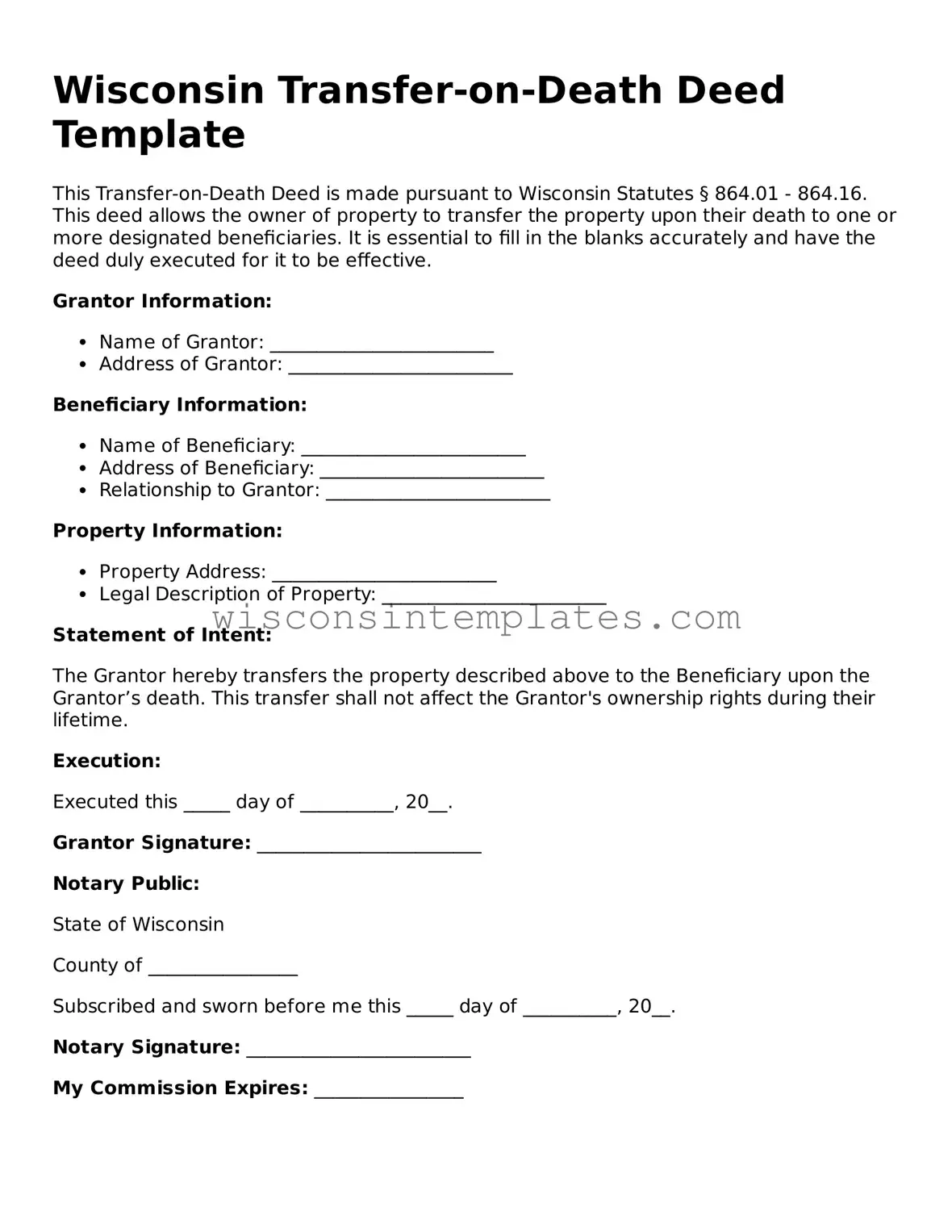Legal Transfer-on-Death Deed Form for Wisconsin State
The Wisconsin Transfer-on-Death Deed form allows property owners to transfer their real estate to designated beneficiaries upon their death, without going through probate. This deed provides a straightforward way to ensure that your property goes directly to your loved ones. Understanding how this form works can help you make informed decisions about your estate planning.
Launch Editor Now
